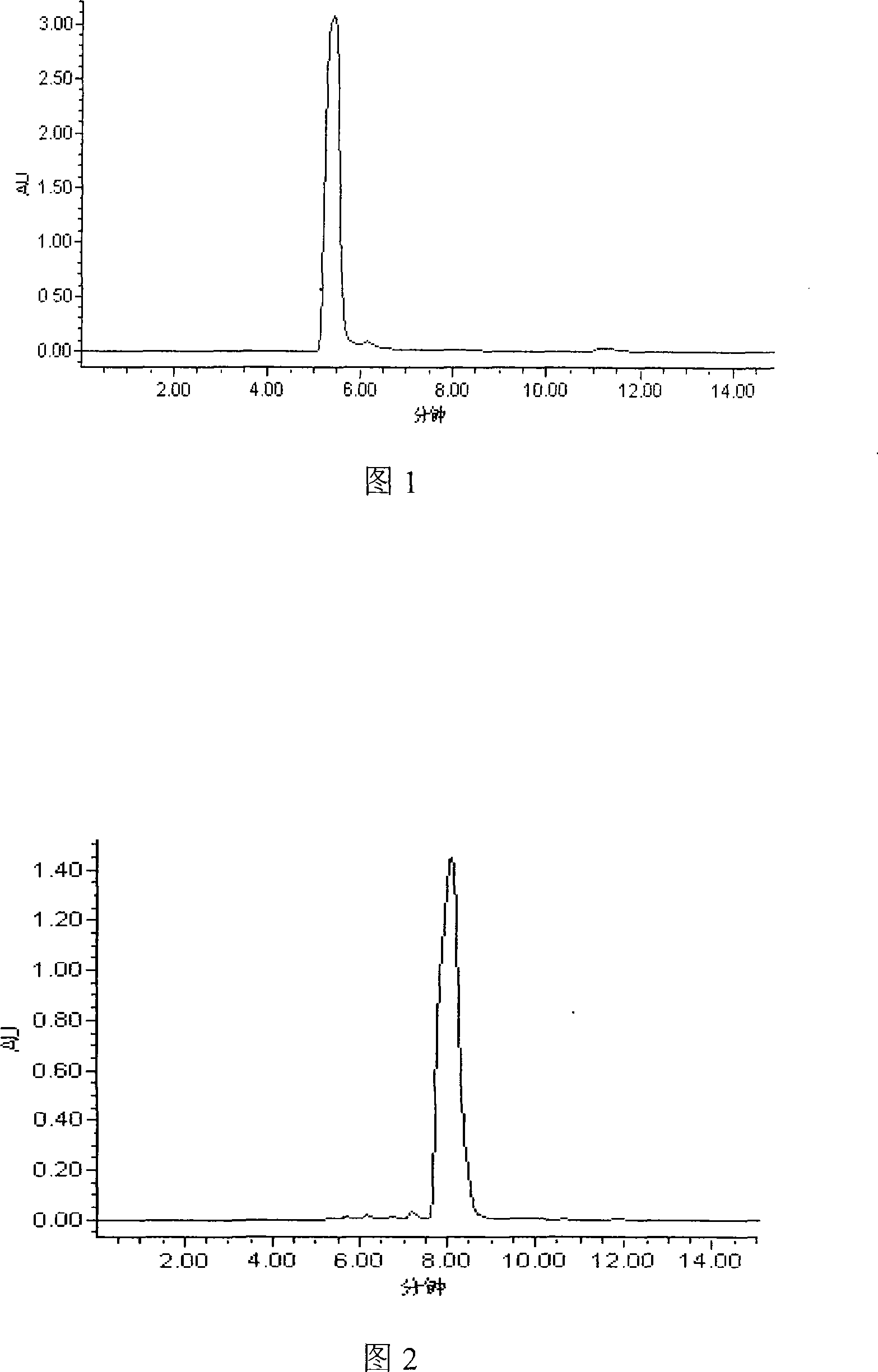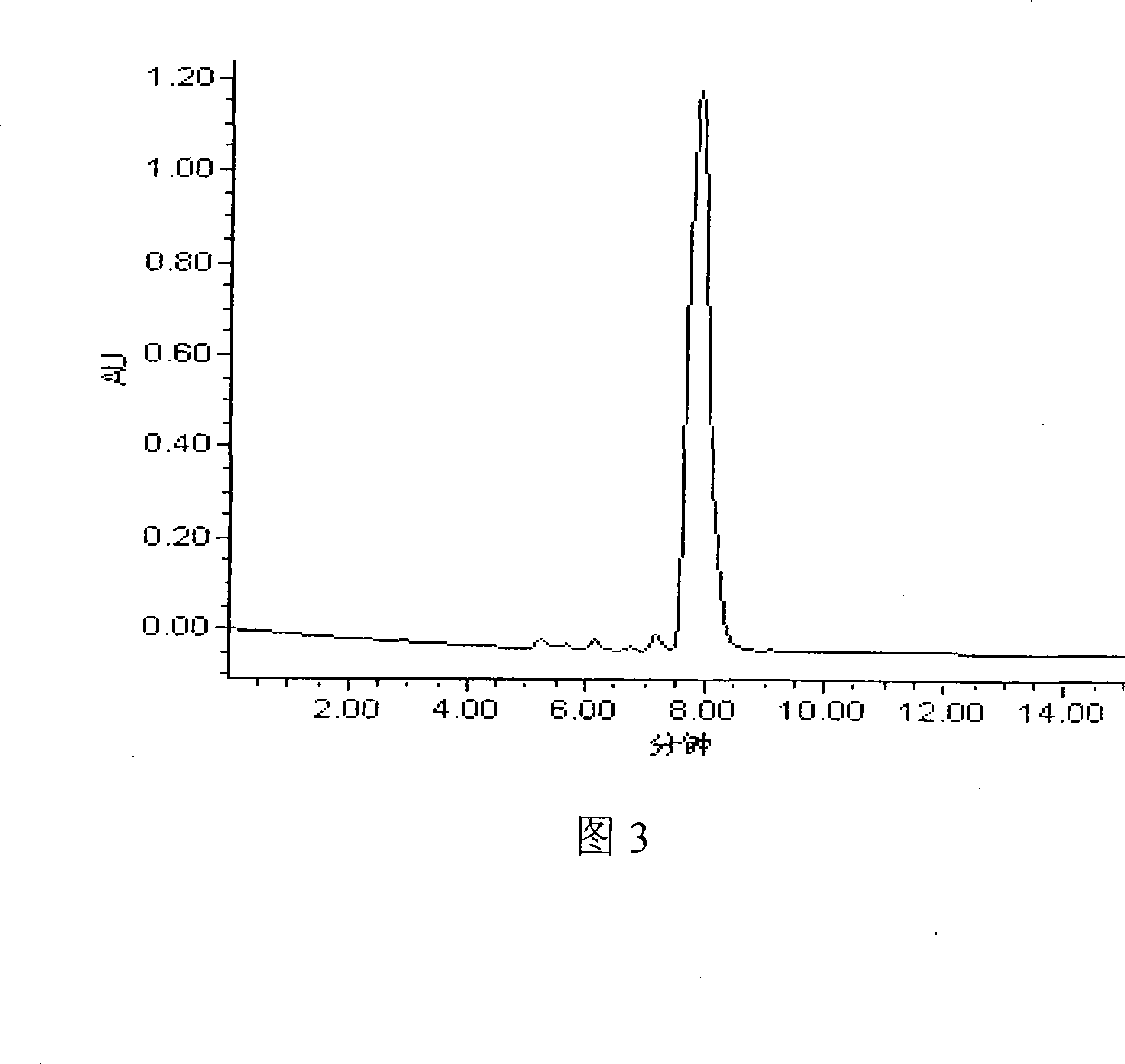Process for synthesizing adenosine methilanin by intact cell catalysis
A technology of adenosylmethionine and whole cells, which is applied in the field of preparing adenosylmethionine by whole-cell catalysis, can solve the problems of large loss of enzyme activity and difficulty in extracting SAM synthetase, and achieve simple ingredients and improved Stability and utilization, and the effect of reducing production costs
- Summary
- Abstract
- Description
- Claims
- Application Information
AI Technical Summary
Problems solved by technology
Method used
Image
Examples
Embodiment 1
[0055] Example 1 Fermentation of recombinant Escherichia coli expressing adenosylmethionine synthetase
[0056] Single clones were picked on a solid LB / Tet plate, then inserted into 10 ml liquid LB / Tet medium, and cultured at 37° C. for 16 hours (220 rpm).
[0057] The above-mentioned bacterial solution was transferred to 2L liquid LB / Tet medium, and cultured at 30°C for 16 hours (280 rpm), so that the growth of the bacterial cells reached a stationary phase.
[0058] The recombinant Escherichia coli can also be cultured at 15-38°C to express the adenosylmethionine synthetase. When cultured at 15°C, it takes more than 30 hours for the cells to grow to the stationary phase, and the expression level of adenosylmethionine synthetase is low, and the enzyme activity is about 8 times that of wild E. coli; when grown at 38°C It only takes about 8 hours for the cells to grow to the stationary phase, but the expressed recombinant adenosylmethionine synthetase forms more inclusion bodi...
Embodiment 2
[0060] Example 2 Fermentation of recombinant Pichia pastoris expressing adenosylmethionine synthetase
[0061] Inoculate the Pichia transformants with high expression of adenosylmethionine synthetase into a test tube containing 5ml of YPD medium, cultivate overnight at 28-30°C at 280 rpm, and transfer to In a 2L shake flask containing 250ml of fermentation medium, culture was carried out at 30°C and 280 rpm, and samples were taken every 24 hours to monitor the activity of expressed adenosylmethionine synthetase. The results showed that after culturing for 5 days, the activity of adenosylmethionine synthetase expressed by Pichia pastoris reached the highest level, which was more than 80 times that of Pichia pastoris X-33 enzyme activity.
[0062] The cultured bacterial liquid was centrifuged at 6000 rpm for 10 minutes, the supernatant was discarded, and the precipitated bacterial cells were collected for subsequent experiments.
Embodiment 3
[0063] Example 3 Determination of SAM Synthetase Enzyme Activity
[0064] The Escherichia coli cells obtained by fermentation at different culture temperatures were suspended with 0.1 mol / L Tris-HCl buffer (pH=8.0), respectively, and the wild bacteria that were not transformed with the plasmid carrying the SAM synthetase gene were used as a control. Add 3ml of buffer to each gram of wet cells to suspend, and add 100ug / ml lysozyme to react at 35°C for 30 minutes, and then ultrasonically break the cells at 0°C. The crude extract of SAM synthetase was collected by centrifugation at 12000 rpm at 4°C for future use.
[0065] Set the reaction system 1ml, which contains 100mM Tris, 100mM KCl, 26mM MgSO4, 10mM Met, 13mM ATP, 0.4M sodium p-toluenesulfonate, adjust the pH value of the reaction solution to 7. An appropriate amount of crude extract of SAM synthetase was added to catalyze the reaction, and at the same time, the crude extract of wild bacteria was used as a control, and the...
PUM
 Login to View More
Login to View More Abstract
Description
Claims
Application Information
 Login to View More
Login to View More - R&D
- Intellectual Property
- Life Sciences
- Materials
- Tech Scout
- Unparalleled Data Quality
- Higher Quality Content
- 60% Fewer Hallucinations
Browse by: Latest US Patents, China's latest patents, Technical Efficacy Thesaurus, Application Domain, Technology Topic, Popular Technical Reports.
© 2025 PatSnap. All rights reserved.Legal|Privacy policy|Modern Slavery Act Transparency Statement|Sitemap|About US| Contact US: help@patsnap.com


